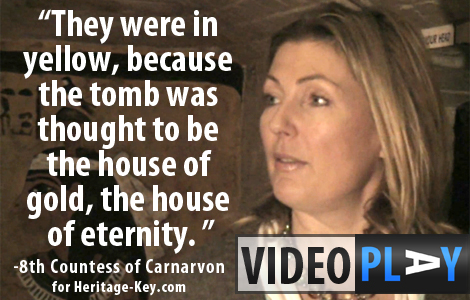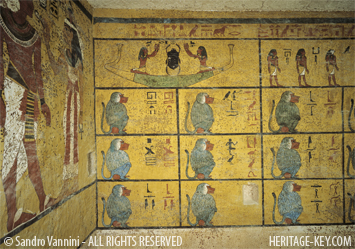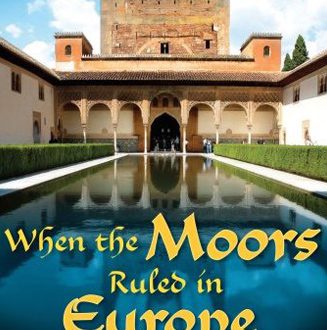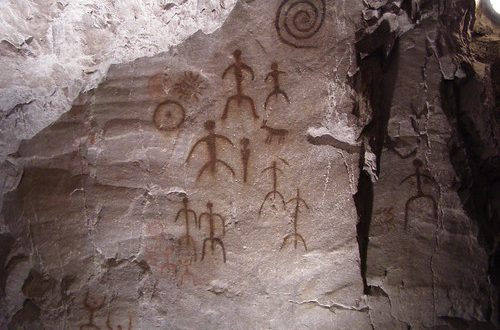 “In most Egyptian tombs you’ve either got the wall paintings or the coffin.” Fiona, 8th Countess of Carnarvon says, stressing the uniqueness of Tutankhamun’s tomb, the greatest discovery in history. Its treasures may be well documented, less so the incredible wall paintings that greeted Howard Carter and Lord Carnarvon when they burst through in 1922 (Watch a special video on the discovery here).
“In most Egyptian tombs you’ve either got the wall paintings or the coffin.” Fiona, 8th Countess of Carnarvon says, stressing the uniqueness of Tutankhamun’s tomb, the greatest discovery in history. Its treasures may be well documented, less so the incredible wall paintings that greeted Howard Carter and Lord Carnarvon when they burst through in 1922 (Watch a special video on the discovery here).
Lady Carnarvon, herself a two-time author on the Tutankhamun phenomenon withCarnarvon& Carter(click here to buy) and Egypt at Highclere: The Discovery of Tutankhamun(click here to buy), seems totally engrossed in the walls she and husband George Herbert, 8th Earl of Carnarvon have replicated in the bowels of Highclere Castle. It’s clear Fiona has studied them for quite some time: and she effortlessly reels off the meanings behind their myriad symbols.
“(Egyptians’) lives here on Earth was transient, their houses were built of mud not brick,” Lady Carnarvon says. “Their tombs were made of stone, that’s why we still have records.” Gold was used as the main colour because of its immutability, representing eternity.
At one point Anubis, “the Jackal guarding (Tut’s) treasury in the innermost room,” greets Tutankhamun on his way to the afterlife. “Anubis is behind (Tut) and I think it’s lovely,” says Lady Carnarvon. “It’s a protecting gesture on Tutankhamun’s shoulder saying, ‘Hey, you’re gonna come up with me to the next world.'” It seems sad that nearly all the treasures Anubis protected so well for over three thousand years have now disappeared 300 miles away to Cairo.
Black borders lining each wall represent the heavens to which Tut would hopefully ascend. His cartouche, a French term for the king’s name, labels him ‘Nebkheperura’: ‘Neb’ means Lord; ‘Kheperu’ signifies rebirth via the scarab, and Ra is the sun god which almost every Egyptian king had in his name.
 The beautiful walls’ many scenes show Tutankhamun at various stages of his quest towards resurrection. At one point he meets Nut, the goddess of the night – from whom we get our modern word for night. On the western wall are the twelve baboons, representing Thoth, god of wisdom. King Tut had to pass all twelve in a day if he could move on to the afterlife.
The beautiful walls’ many scenes show Tutankhamun at various stages of his quest towards resurrection. At one point he meets Nut, the goddess of the night – from whom we get our modern word for night. On the western wall are the twelve baboons, representing Thoth, god of wisdom. King Tut had to pass all twelve in a day if he could move on to the afterlife.
It’s a fascinating tour of one of the world’s truly great ancient landmarks, and one you can carry on yourself at any time with Heritage Key’s King Tut Virtual. You can also read about the tomb walls of KV62 in more detail here on Heritage Key and seeing a slideshow of beautiful images taken inside the tomb by Sandro Vannini. Also make sure you’re up to date on the latest news from KV62, concerning “brown spots” found on the tomb walls. It may have been reduced to a largely empty room over the last century, but there’s no doubting its immense beauty – worlds away from the schematic world we live in today. “Computer programs are linear, zero-one-zero-one,” says Lady Carnarvon, “we write in a linear fashion. The Egyptians wrote to fill up a space.” What a space it is.
HD Video: Discovering King Tut – Tut’s Tomb, House of Gold
(Click here to read a transcript of this video)
Look out for three more special Highclere videos, coming soon!You can watch a whole host of great videos here at Heritage Key – from the perils of Venice to the lost tombs of Thebes. Catch us here or on YouTube. Keep up-to-date with everything by subscribing to our RSS feeds, or by following us on Twitter, YouTube, Facebook, Flickr and iTunes.
You can also buy Fiona Carnarvon’s books right here:
Buy Carnarvon % CarterHERE
Buy Egypt at Highclere: The Discovery of Tutankhamun HERE



